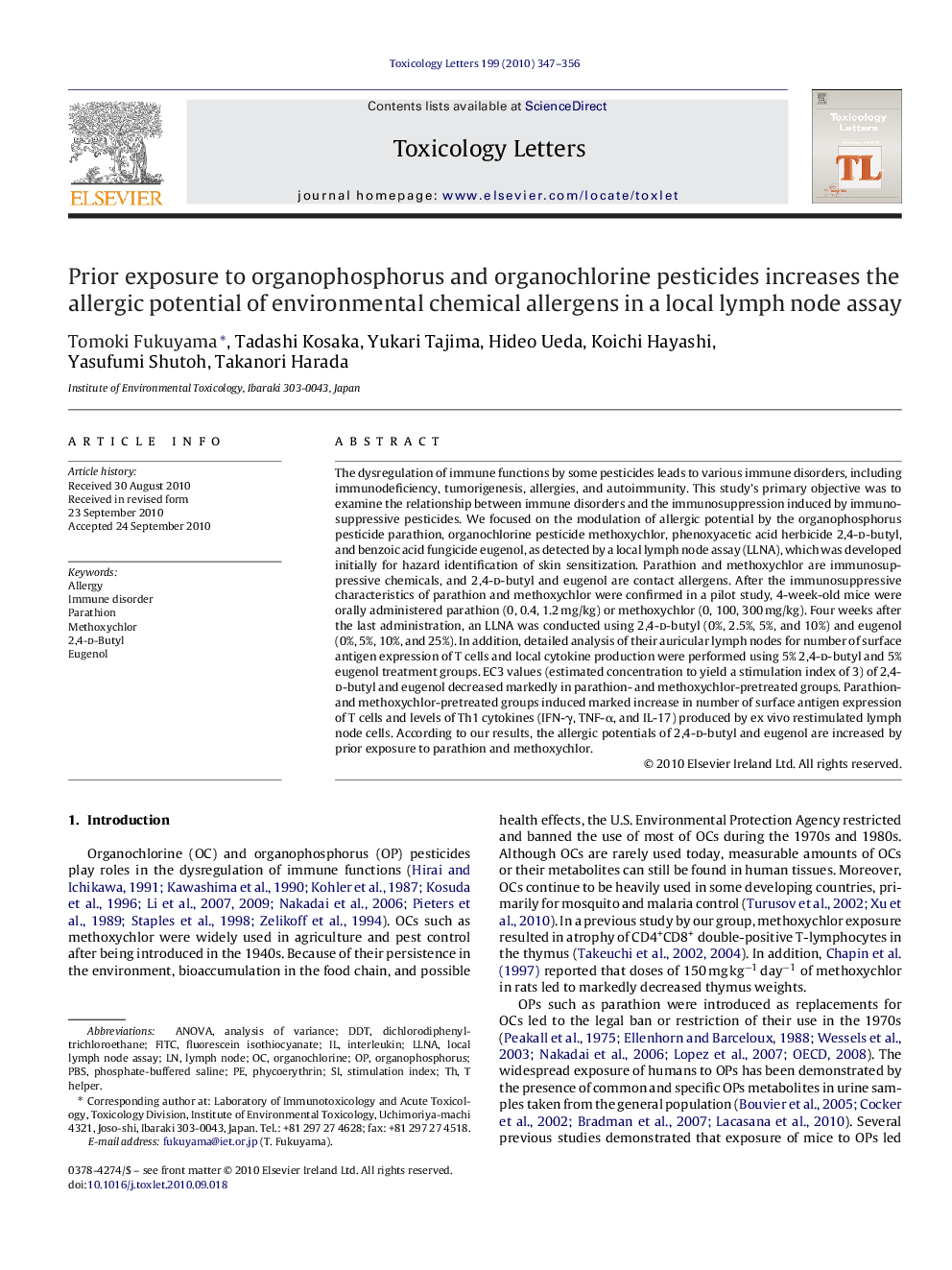| کد مقاله | کد نشریه | سال انتشار | مقاله انگلیسی | نسخه تمام متن |
|---|---|---|---|---|
| 2600478 | 1133266 | 2010 | 10 صفحه PDF | دانلود رایگان |

The dysregulation of immune functions by some pesticides leads to various immune disorders, including immunodeficiency, tumorigenesis, allergies, and autoimmunity. This study's primary objective was to examine the relationship between immune disorders and the immunosuppression induced by immunosuppressive pesticides. We focused on the modulation of allergic potential by the organophosphorus pesticide parathion, organochlorine pesticide methoxychlor, phenoxyacetic acid herbicide 2,4-d-butyl, and benzoic acid fungicide eugenol, as detected by a local lymph node assay (LLNA), which was developed initially for hazard identification of skin sensitization. Parathion and methoxychlor are immunosuppressive chemicals, and 2,4-d-butyl and eugenol are contact allergens. After the immunosuppressive characteristics of parathion and methoxychlor were confirmed in a pilot study, 4-week-old mice were orally administered parathion (0, 0.4, 1.2 mg/kg) or methoxychlor (0, 100, 300 mg/kg). Four weeks after the last administration, an LLNA was conducted using 2,4-d-butyl (0%, 2.5%, 5%, and 10%) and eugenol (0%, 5%, 10%, and 25%). In addition, detailed analysis of their auricular lymph nodes for number of surface antigen expression of T cells and local cytokine production were performed using 5% 2,4-d-butyl and 5% eugenol treatment groups. EC3 values (estimated concentration to yield a stimulation index of 3) of 2,4-d-butyl and eugenol decreased markedly in parathion- and methoxychlor-pretreated groups. Parathion- and methoxychlor-pretreated groups induced marked increase in number of surface antigen expression of T cells and levels of Th1 cytokines (IFN-γ, TNF-α, and IL-17) produced by ex vivo restimulated lymph node cells. According to our results, the allergic potentials of 2,4-d-butyl and eugenol are increased by prior exposure to parathion and methoxychlor.
Journal: Toxicology Letters - Volume 199, Issue 3, 15 December 2010, Pages 347–356